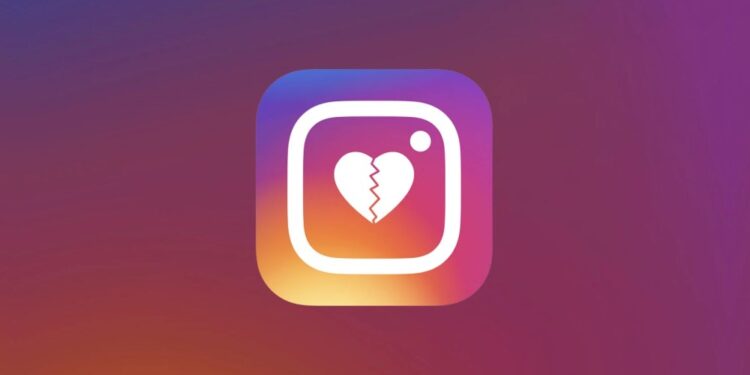There are a variety of reasons to look for an Instagram replacement. The platform’s users are often dissatisfied with the work of the algorithm, significantly reduced rates of reach and engagement. Because of that, independent creators and small businesses find it increasingly difficult to compete for attention with brands whose advertising budget is considerably bigger. Even if you don’t experience any problems with Instagram, being an early adopter of up-and-coming social networks is always a smart move. It helps to establish your presence and grow an audience before a platform becomes too popular and overcrowded.
Here are the top 10 best Instagram alternatives.
1. Twitter
Twitter may not seem like the most obvious choice for photographers. However, after struggling with low engagement for traditional posts on Instagram, photographers have been positing Twitter as the next, best photo-sharing platform. First of all, Twitter has a reasonably large photographer community and the conversational aspect of the platform means user engagement is typically higher than Instagram or other photo-centric websites.
Twitter Spaces also allows photographers to connect with others in the community as well as create and join photography-related discussions with audio. While Twitter used to be known for its image compression, the platform now supports higher-resolution images. In order to enable the feature, users will have to go to the “data usage” section of the settings menu in the Twitter app.
2. BeReal
Set up to be the anti-Instagram, BeReal bans videos of any kind and only allows users to upload still photographs. The app only allows users to post one photo per day and only at a randomized specific time. BeReal wants users to focus on sharing authentic posts and so there are no editing tools or filters on the app. Furthermore, users do not get to decide when they share a photo. Instead, they receive a notification to post a picture in their current surroundings and receive a two-minute timeframe to do so.
However, you can still post a late BeReal without any real consequences, other than the fact that your friends will be able to see how late your post was. In the right corner next to your post, you’ll see a time stamp noting when you posted your BeReal – whether that was 20 minutes late, or 20 hours late. When the shutter button is pressed, BeReal captures using both a front and rear-facing camera, making it impossible to hide behind the main camera.
This bi-directional capture feature means that viewers get a complete snapshot of what the poser is up to at that moment. BeReal proudly claims that its app will not “make you famous” and “if you want to be an influencer then you can stay on TikTok and Instagram.” But this may not be strictly true and there may be ways to showcase your photography on the app.
BeReal has two feeds: “Your Friends” and “Discovery”. The Discovery tab lets you see BeReals from people all over the world and request to add them on the app, even if you are not friends. So, if you want to post photographs for everyone to see on the Discovery tab, you can tap the button at the bottom of the screen after taking your BeReal photos.
3. Flickr
A pioneer in digital photography-sharing that had the loyalty of serious photographers in the mid-2000s, Flickr has been seen a growth in popularity in the recent past. When Flickr began its journey in 2007, and with no Instagram around, it was the most popular site for photo-sharing. Flickr offers a nice range of features when you upload a photo on the app. In addition to a comments section where other Flickr users can discuss your photography, you can also post information on where your image was taken, what camera it was taken on, and at what aperture.
You can also organize your photos into albums and batch edit the information on the pictures. The app has two types of accounts: Free and Pro. Flickr’s current free accounts come with a variety of limitations. While users can only upload up to a maximum of 1,000 photos on free accounts, they are not allowed more than 50 nonpublic photos on the platform. The free account also includes ads. While Flickr’s Pro account offers unlimited uploads and unlimited nonpublic photos.
4. Tumblr
Tumblr is another longtime photo-sharing favorite that photographers are returning back to, in the wake of Instagram’s pivot to video. Tumblr users can create a blog where they can post photographs and text to accompany the images. They can also re-blog from other Tumblr feeds. It is also easy to set up a shared account for collaborative postings, making Tumblr an excellent platform for photographers to engage with one another.
Tumblr also offers a feature called a “+Post” which lets you lock posts behind a paywall and allows your supporters to purchase a subscription to them. Photographers who use Tumblr will tell you that the platform allows for more creative expression than the other social media giants, like Instagram or Twitter. Tumblr is free to use. However, if you want to view blogs ad-free, you will need to pay for a subscription.
5. Grainery
Grainery is a new photography app for film shooters to share their work. If you are a film photography enthusiast who wants to find a new space for your images, away from Instagram, then this might be the app for you. Grainery is a new Instagram-inspired, photo-sharing app but specifically for film photographers. The app’s layout will be familiar to Instagram users, with photos displayed much like Meta’s marquee photo-sharing site.
Elements such as follower suggestions, direct messaging, explore page, notifications, and even the fonts are strikingly similar to Instagram. But unlike Instagram, when Grainery users upload a photo, they can add details such as the type of film used, the analog camera body, and the lens model to the post. Users can even state the exposure value, and say whether the film was pushed or pulled during development and by how many stops. Once a picture has been posted, users of the app can find an image by searching for a specific camera, lens, or film.
6. Glass
Glass is highly recommeded for photographers as an Instagram alternative due to its singular focus on photography. Glass offers a showcase for photographers where they can share portfolios and also allows organic exploration with a public profile option. Unlike Instagram, users can only react to posts with appreciation and not likes.
Instagram’s advertising and sales-supported model has made it an irksome space for photographers to share their work. So instead, Glass offers a subscription-based service – with no ads, engagement algorithms or data tracking. The fact that Glass is ad-free makes its design notably cleaner than Instagram’s layout.
7. VSCO
VSCO offers a number of features similar to Instagram. You can take photos, edit them, and add a variety of filters through the app. VSCO also has a social network-like community feature, Spaces, which allows photographers to connect with each other through visual conversations and shared galleries around a particular theme, photography style, event, or location. The free version of the app comes with a limited number of editing features. However, a premium membership plan offers access to a greater variety of editing tools and several collections of presets.
8. 500px
500px offers professional photographers a place to store, exhibit, as well as license their work and get paid for it. On 500px, photography is the main focus and users’ images are displayed prominently as part of the platform’s design. The “Discover” dropdown menu allows you to see new uploads by other users as well as images that the editor has chosen to give exposure to. You can see images that users find popular, and others can comment on your images too.
500px has long been focused around semi-pro and pro photography communities. This makes it primarily useful as a marketing tool for professional photographers and photography studios or businesses that sell photography equipment. 500px is also an excellent tool for businesses that emphasize photography in their visual marketing, as you can use it to find professional photographers to partner with or even buy images directly.
500px also offers several different tiers of membership, including multiple paid plans. The free 500px plan allows you to upload a limited number of photos and also has ads. Paid members get access to perks like analytics, unlimited uploads, priority support, no ads, gallery slideshows, profile badge, portfolio website, access to photography resources, business and event listings, and business profiles for professional photographers. 500px is designed to be used on both mobile and desktop, giving an enhanced viewing experience.
9. EyeEm
EyeEm functions as both a social media platform and an image marketplace. This makes it doubly appealing to dedicated artists and photographers. The most unique feature of EyeEm is the “missions” they set for users, challenging them to test their artistic skills by creating images based on briefs provided by brands partnered with EyeEm. Prizes for these competitions range from having your images featured in commercial campaigns and/or exhibitions to actual cash prizes.
If your business is heavily focused on art, photography, or related software or equipment, you should consider EyeEm as a marketing channel. EyeEm’s marketplace functionality also makes it a useful tool for any business that uses visual elements in their marketing. EyeEm is a great place to find affordable images that will make your brand stand out from the rest.
10. Steller
Steller is a unique app that focuses on storytelling. Rather than focusing purely on visual mediums, Steller encourages users to use a combination of video, images, text, and built-in layouts to tell complex stories. This focus on multimedia allows users to explore a variety of topics in depth. Steller is an excellent platform for story-focused brands that want to produce high-quality content in a variety of mediums.
Conclusion
Despite being the world’s biggest photo-sharing app, Instagram’s focus on Reels and “recommended” content is making photographers look for alternative platforms to share their pictures. Fed up with Instagram’s TikTok-ification, photographers are tentatively moving to alternative platforms that prioritize still imagery – with certain photo-sharing apps seeing a boost in downloads as a result.
As a note, experts believe there is no one answer to replacing Instagram as there is nothing in the market that perfectly replaces it. Artists are encouraged to look elsewhere but think of it as diversification, not as a full-on replacement. In the end, the Instagram alternative that’s best for you is based on what kind of business you own and what you want to get out of social media.




































































































































































































